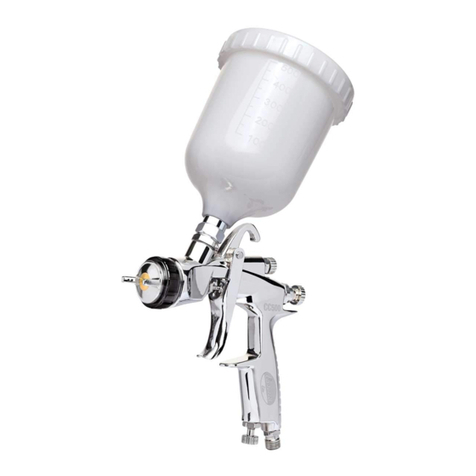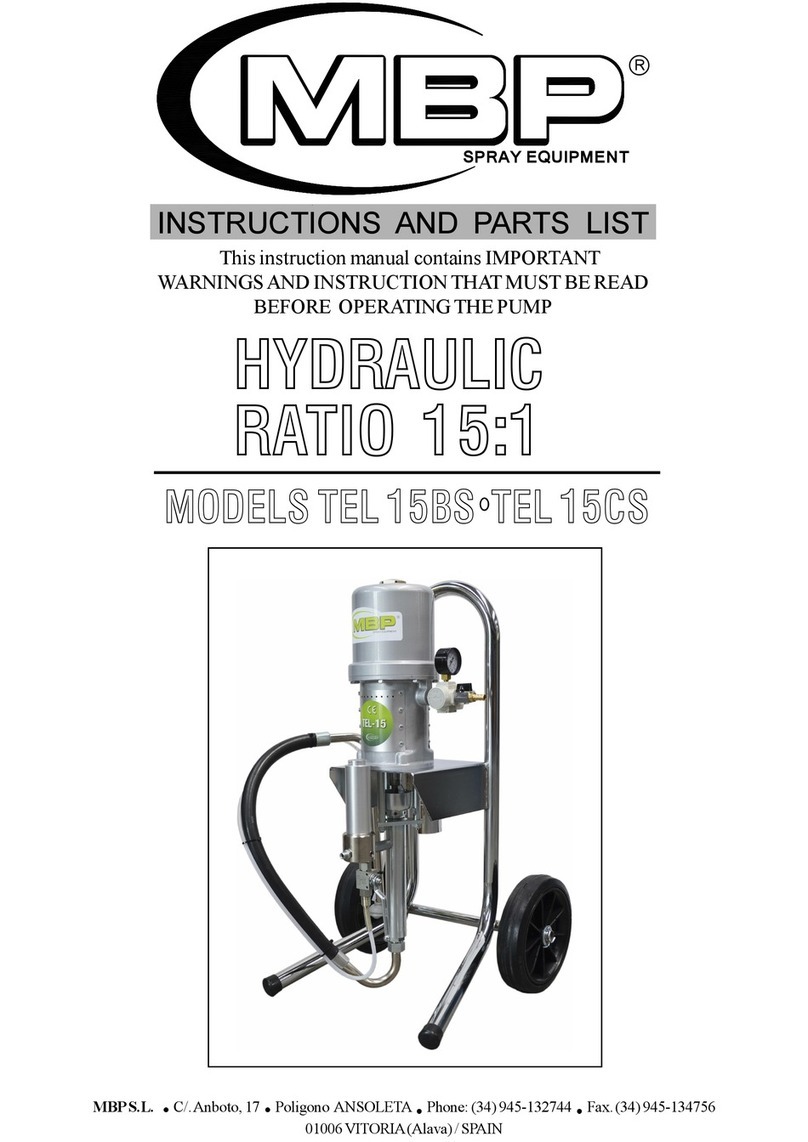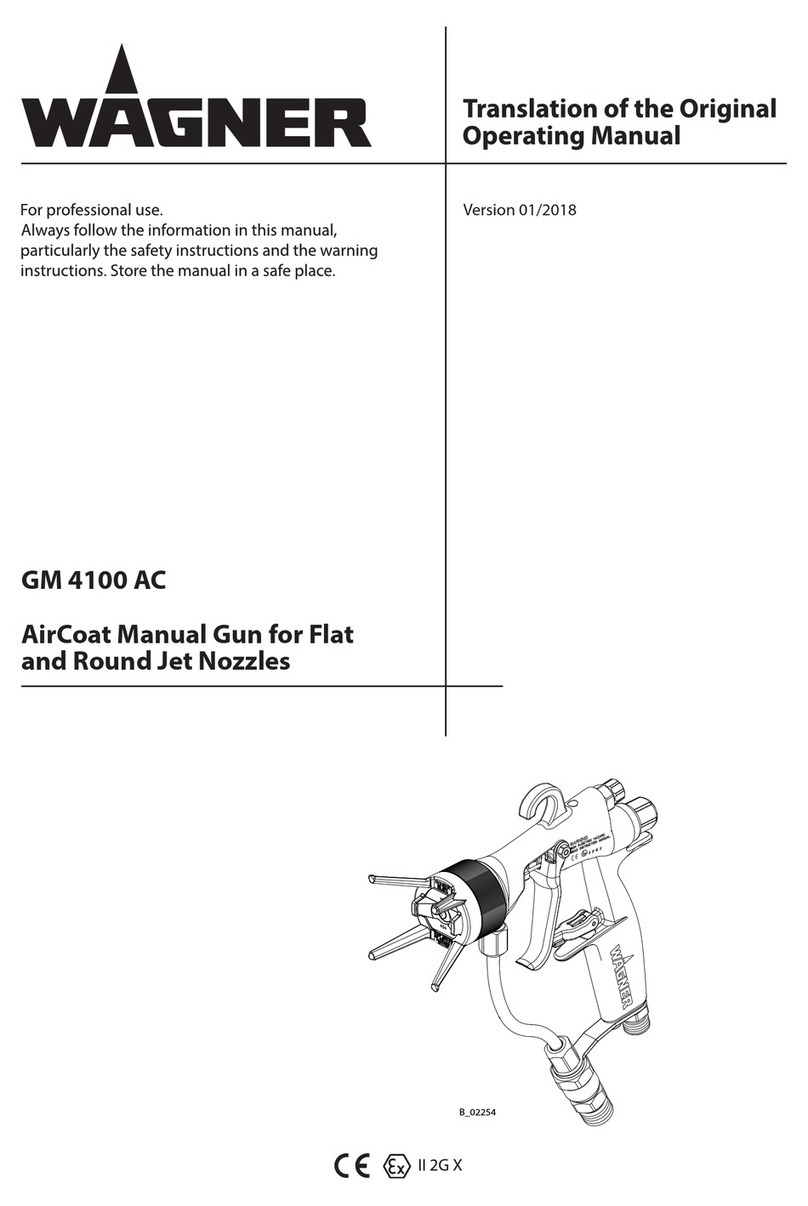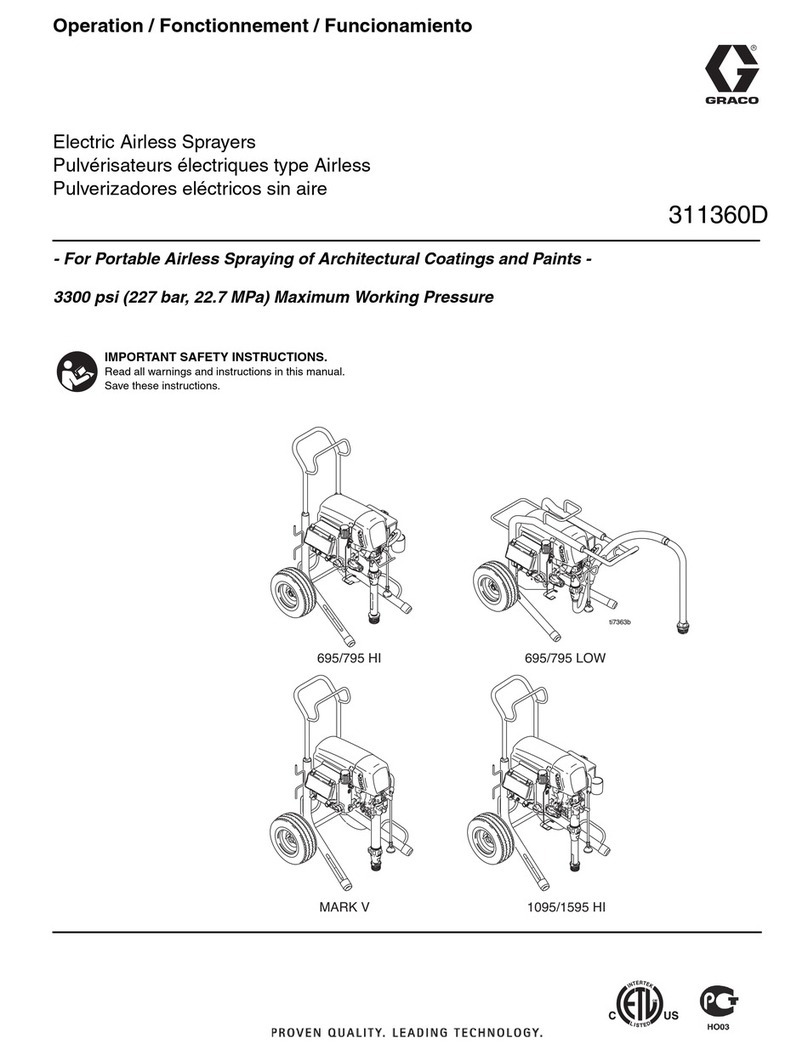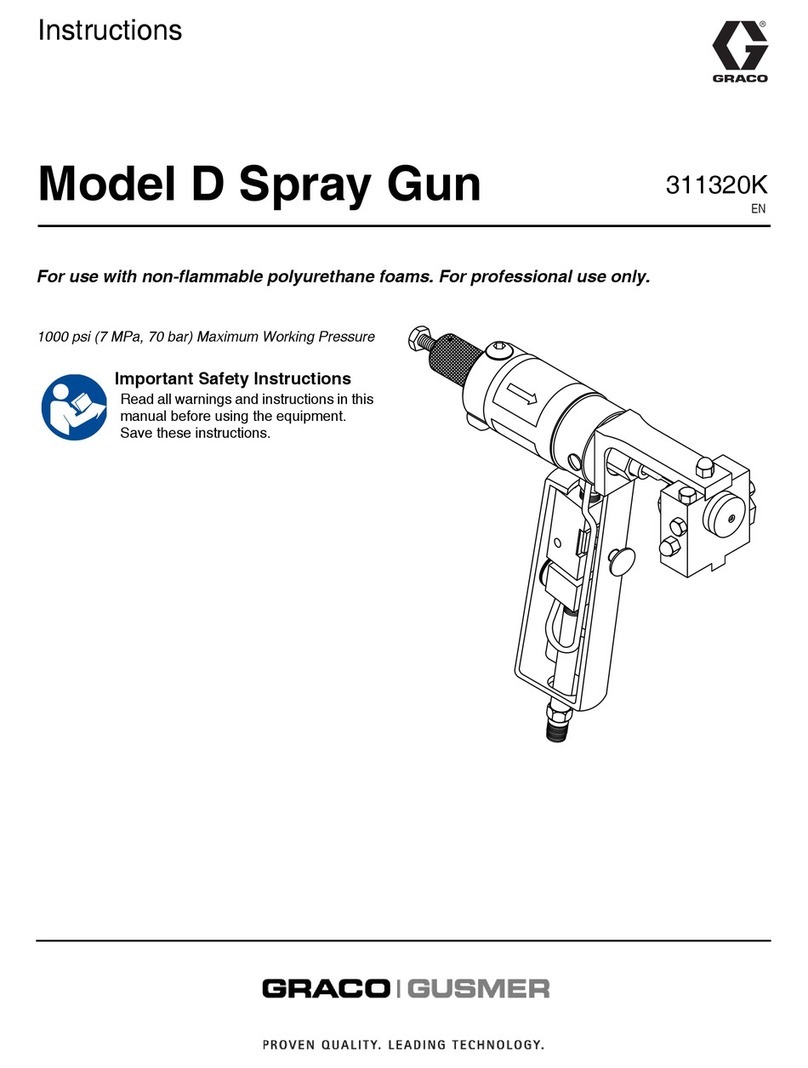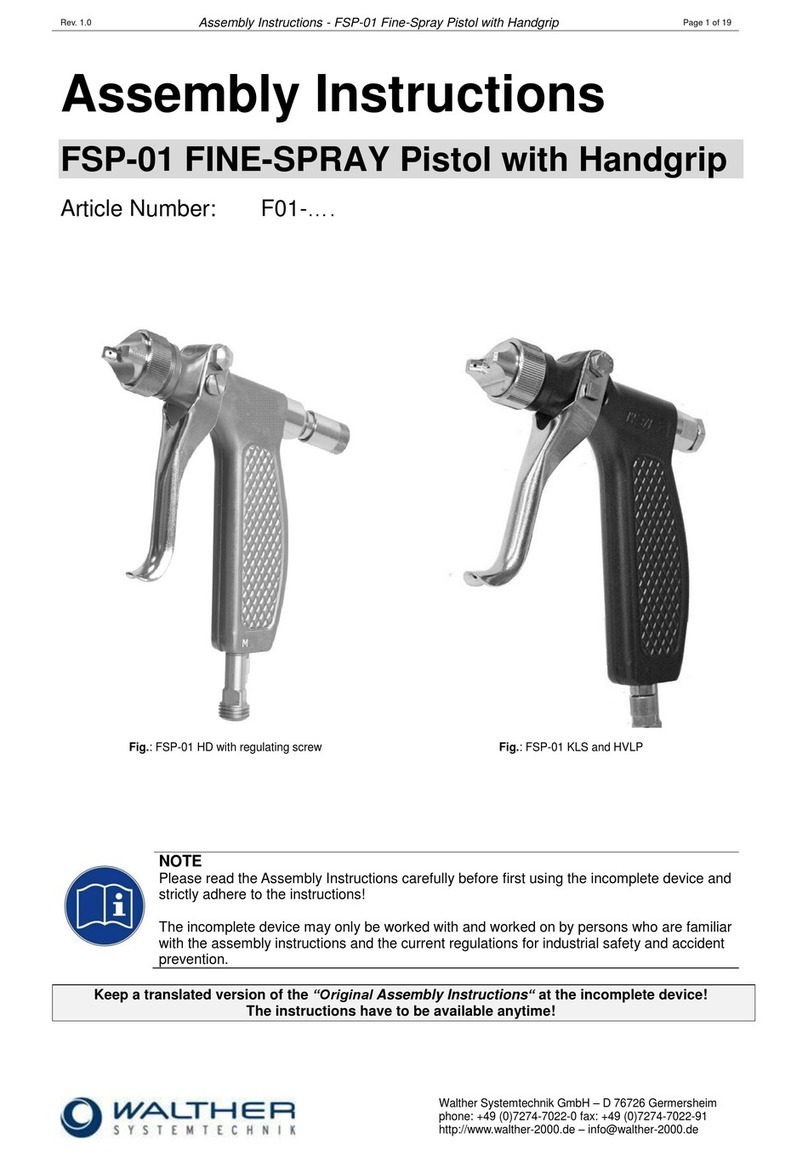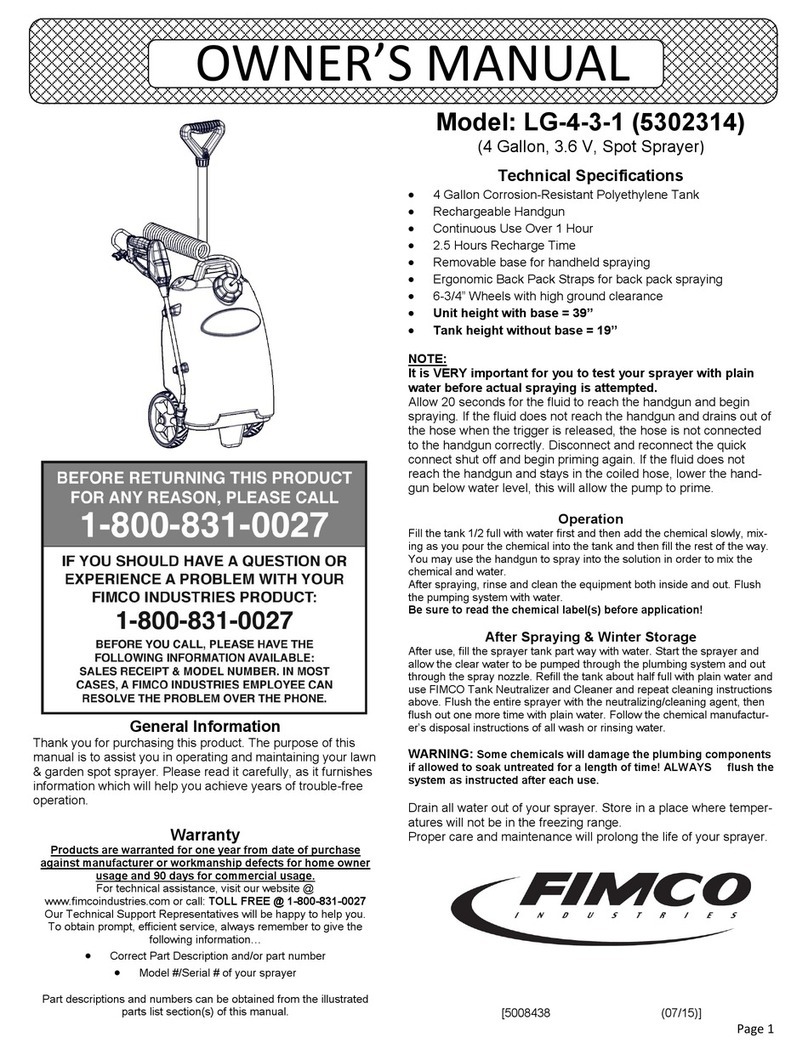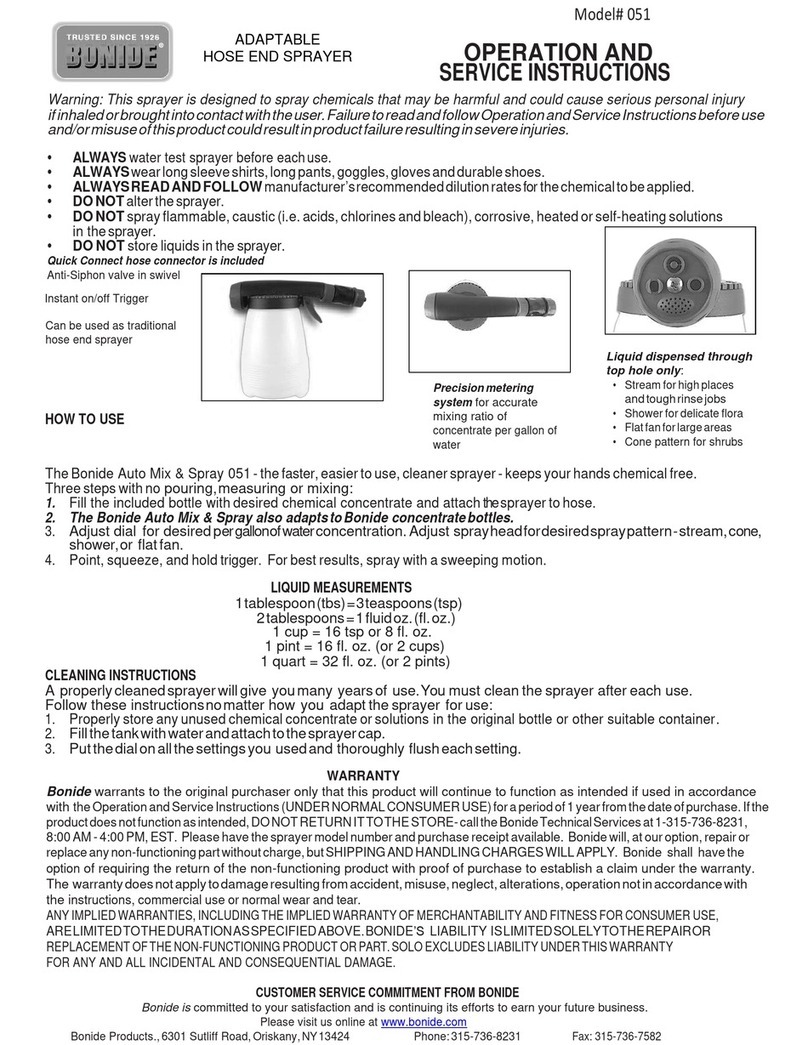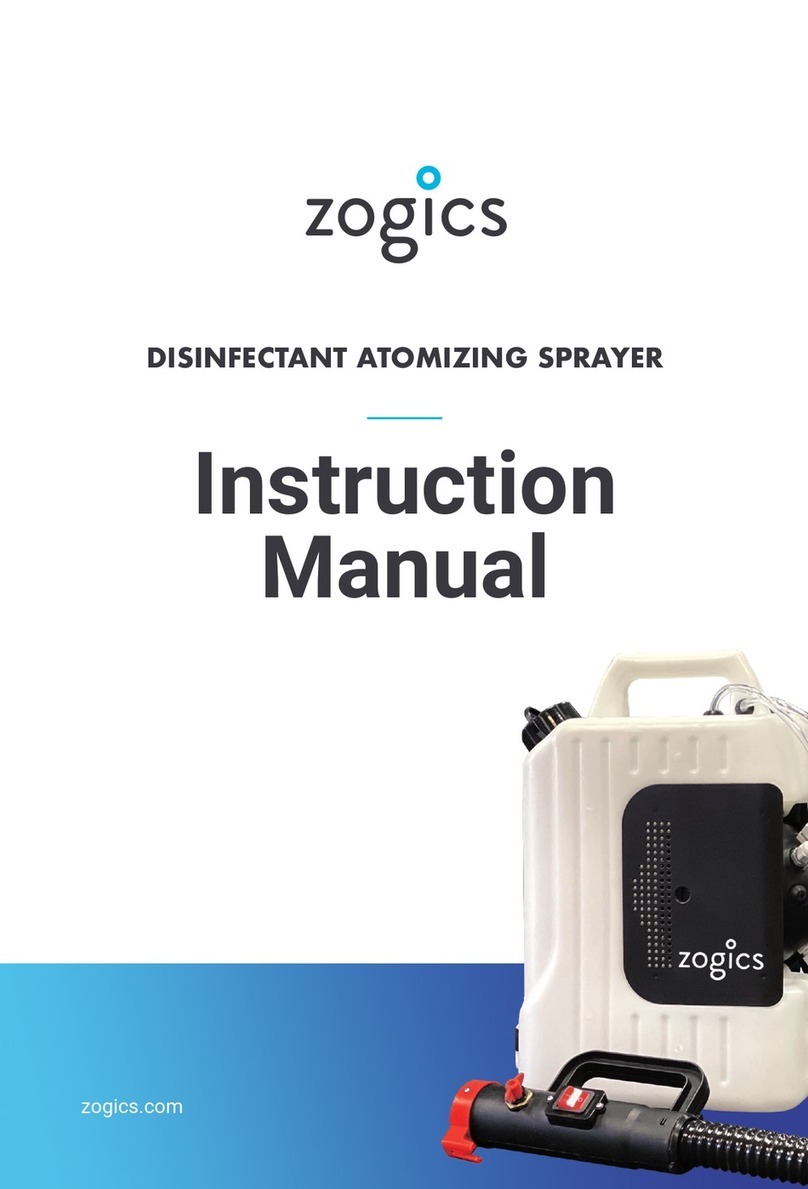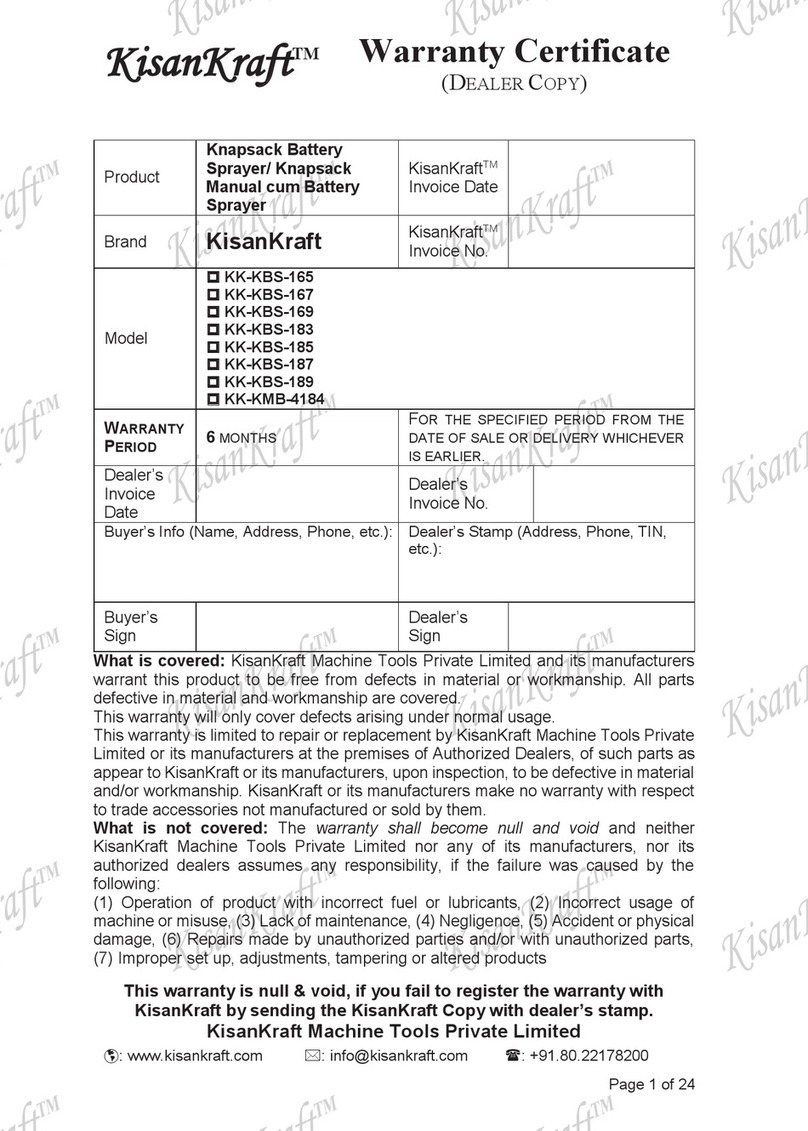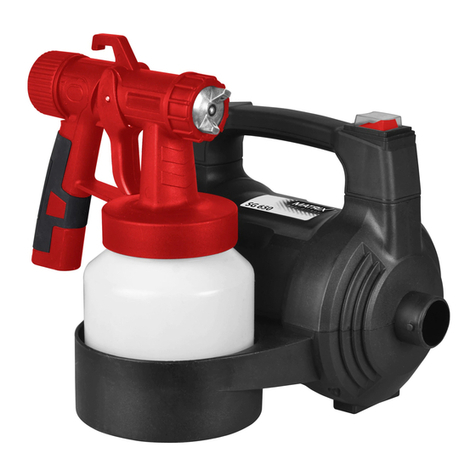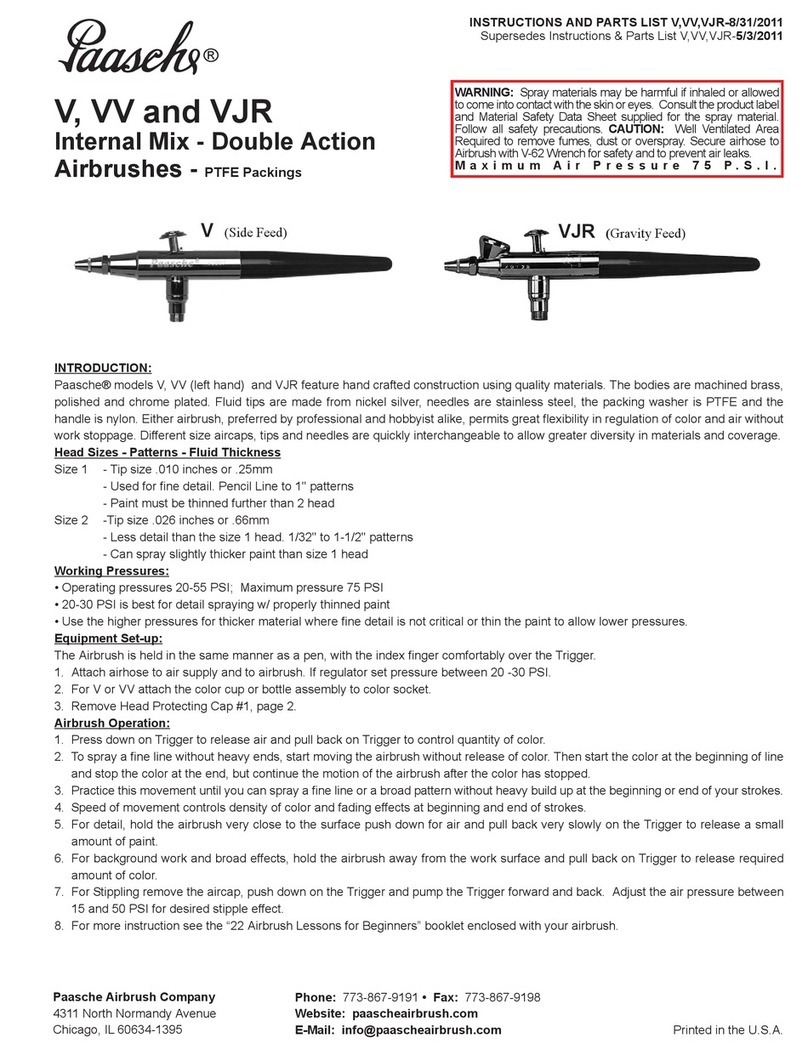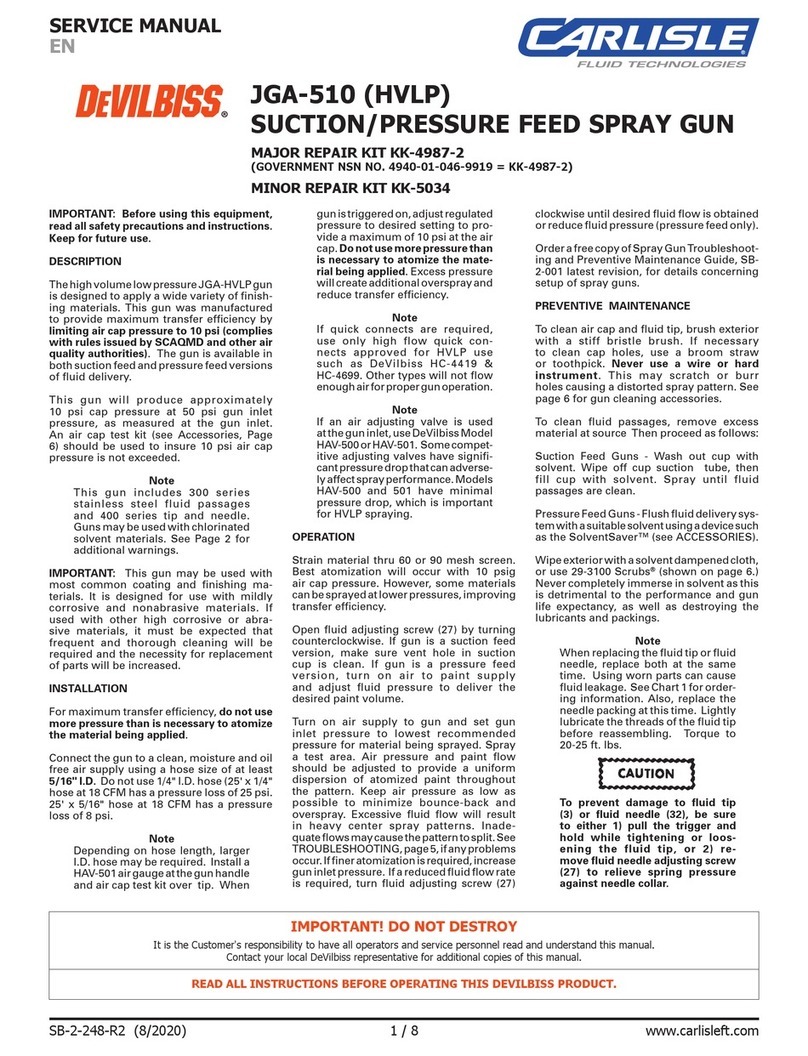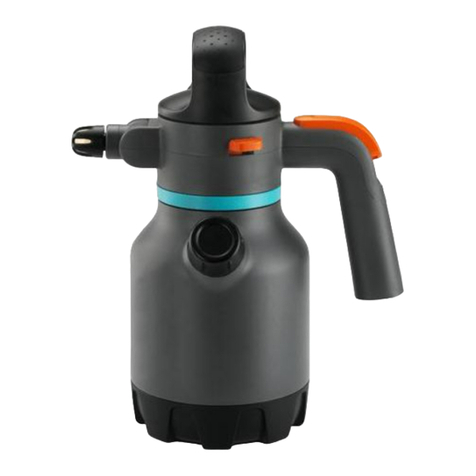Recycling powder is not recommended as any debris will result in a rough
surface. Contaminated powder can be safely disposed of in the trash.
Powder coating is an extremely durable flexible coating. However care needs
to be exercised when bolting powder coated components in place. To
avoid chipping use steel or nylon washers under nut and bolt heads. For an
assortment of 1/8” - 1/2” ID Nylon washers order #43191.
Tips on care of powder coated surfaces
Powder coated surfaces easily shed dirt. Wash with a dish soap and water solution. Automotive
(non-abrasive paint polish) may be used to remove water spotting and enhance the gloss.
CAUTION
Before re-connecting your powder gun be sure to change the air pressure
from 30 psi back to 8 psi! The cup and lid assemblies are designed
for no more than 10 psi. Replace your moisture filter regularly,
as moisture will build up even when the gun is not in use.
Typically, one coat of powder is all that is needed. However, some finishes such
as Argent Silver Base (#10102), Reflective Chrome (#10285), Chrome Smoke
(#10543) and Gray Metallic (#10341) need to be top-coated with a clear or
translucent finish to protect the metallic coatings from oxidation and dulling over time.
•
Once the first cure is complete, allow the part to cool without touching the surface.
Once cool, support it as you did for the first coat, in your spray booth or work area.
• Load the gun with the appropriate color or clear powder about 1/3rd full
(about an 1.5” of powder).
• Attach the ground clip directly to a bare metal area on your part. You can do
this by threading in an old bolt into an existing hole, or simply scraping the
powder from an inconspicuous area, and attaching the clip.
• Apply the second coat in the same manner as the first, concentrating on the
deep recessed areas first. A good cloud of powder is critical in getting a
good coating. If you have difficulty applying the 2nd coat, see troubleshooting
section.
• After the part is properly coated, remove the ground clip. If you have a bare
spot where the ground clip was connected, you can now apply powder with
the gun to cover that spot.
• Cure this second coat in the oven, in the same manner as the first coat.
Note: Gloss Clear (10093) should go into an oven preheated to 350° F and
allowed to cure for 20 minutes at 350° F after complete flow out has occurred.
Curing at higher temperatures may cause yellowing.
RE-USING POWDER
PUTTING PARTS BACK INTO SERVICE
APPLYING A SECOND COAT
PROBLEM: Pitted Finish
• Make sure the gun is thoroughly cleaned before changing to another powder.
• Make sure part is completely cleaned of all contaminants (see page 7).
• After cooling, wet sand the areas with 400 grit to level pits. A second coat of powder can
then be applied to the entire part.
PROBLEM: Coating Porous Materials
In some cases, contaminants in porous materials will cause pits in the powder. Porous cast
iron, die cast, cast aluminum, and magnesium parts trap contaminants that, when heated,
will outgas and cause porosity problems as the powder is cured. To avoid this, follow these
Preheating instructions: For large or heavy parts, and to prevent pitting from occurring,
preheat the part to 450°F for 30-60 minutes. The time that a part needs to be preheated
varies with size. Once the part has cooled, use PRE Painting Prep (#10041Z) or acetone
to remove the newly exposed contaminants. Wipe the part repeatedly until no further
contaminants come off on a clean white rag. Let the part cool to room temperature before
applying the powder. NOTE: Die-cast metal and solders vary widely in formulation, many
of which can be difficult to powder coat and, in some cases may even melt at 400° F.
PROBLEM: Orange Peel
“Orange Peel” is when the coated surface resembles the surface texture of an orange. A
certain amount of orange peel is unavoidable especially with polyester based powders.
An orange peel condition can often be removed by sanding the part with 400 grit sand
paper (wet or dry) and compounding as you would conventional automotive finishes.
If you want to buff by hand, use AutoSol Polish (#13170). The main cause of orange
peel is insufficient coating, over-baking, or excessive powder build up. You will know if
powder build up occurs because the powder will start to stand on its end like hair. If this
happens, stop applying powder and with light air pressure blow off some of the powder.
If powder does not apply evenly due to moisture build up, replace moisture trap on gun
and use fresh powder. Cured powder can be finished in the same manner as liquid paint.
PROBLEM: Poor Spray Pattern
If the gun does not spray, the air pressure could be too low. Moisture could be clogging the
Disposable Filter (#34066). Replace if necessary. The level of powder in the cup should
be at least one inch deep from the bottom of the cup to flow efficiently through the gun.
The deflector should be about 3/16” from the end of emitter.
PROBLEM: No Coverage or Poor Coverage in Recessed Areas
Hold the gun so that the side or peripheral discharge of powder goes into crevices,
recesses, and sharp angles. In extreme cases, gun can be used without a deflector and
static tubes. Exercise care to maintain at least 3” from part being coated to avoid a spark.
PROBLEM: Poor Coverage When Applying 2nd Coat (Hot Application)
Powders can be applied to hot surfaces. To use this technique, pre-heat the part to
cure temp. This may take 10-40 minutes depending on size. After pre-heating, remove
part from oven and immediately apply powder. You will notice that powder will flow
immediately upon contact. Exercise care to avoid drips and runs. Place coated part back
into pre-heated oven set at cure temp for an additional 20 minutes to complete the cure.
To order parts and supplies, call 1-800-345-1178 or www.eastwood.com 15
TROUBLESHOOTING






